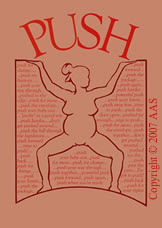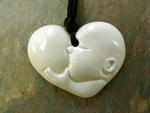From the American Journal of Obstetrics and Gynecology, August 2008:
FINALLY ... someone in the US, in obstetrics is looking at the need to create a Standard of Care. This was done in Nashville, where there is an alarmingly high number of neonatal deaths. Why does it always wait that long before the system responds?
Improved outcomes, fewer cesarean deliveries, and reduced litigation: results of a new paradigm in patient safety
FINALLY ... someone in the US, in obstetrics is looking at the need to create a Standard of Care. This was done in Nashville, where there is an alarmingly high number of neonatal deaths. Why does it always wait that long before the system responds?
Improved outcomes, fewer cesarean deliveries, and reduced litigation: results of a new paradigm in patient safety
Received 16 October 2007;
revised 26 November 2007;
accepted 14 February 2008.
Available online 12 May 2008.
(My comments in italics and parentheses)
In a health care delivery system with an annual delivery rate of approximately 220,000, a comprehensive redesign of patient safety process was undertaken based on the following principles:
(1) uniform processes and procedure result in an improved quality;
(no mention of whether that is code for "practice according to evidence-based science).
(2) every member of the obstetric team should be required to halt any process that is deemed to be dangerous;
(woo-hooo, maybe someday they'll even include the parents as members of the team who can halt any process, OH! wait, after I reveal the information from a obstetrician about parents rights -- in my film -- they will!!)
(3) cesarean delivery is best viewed as a process alternative, not an outcome or quality endpoint; (Dang!)
(4) malpractice loss is best avoided by reduction in adverse outcomes and the development of unambiguous practice guidelines;
(Double Dang and Holy Sh--! this is getting mightily close to actually being about the BABY!) and
(5) effective peer review is essential to quality medical practice yet may be impossible to achieve at a local level in some departments.
(Whaaaat ... more PEER REVIEW? How about some effective NON-PEER review and law enforcement? How about some supervision of them foxes who are in charge of the hen house?)
Since the inception of this program, we have seen improvements in patient outcomes, a dramatic decline in litigation claims, and a reduction in the primary cesarean delivery rate.
I'll be getting the full article and reporting back ..






1 comment:
I just watched your video on YouTube a few days ago - it was incredible!! I'm definitely going to highlight it on my blog & am also interested in the 18 minute trailer for my clients. Looking back to your 9/1 entry re: the AJOG article - that's very, very interesting.
Post a Comment